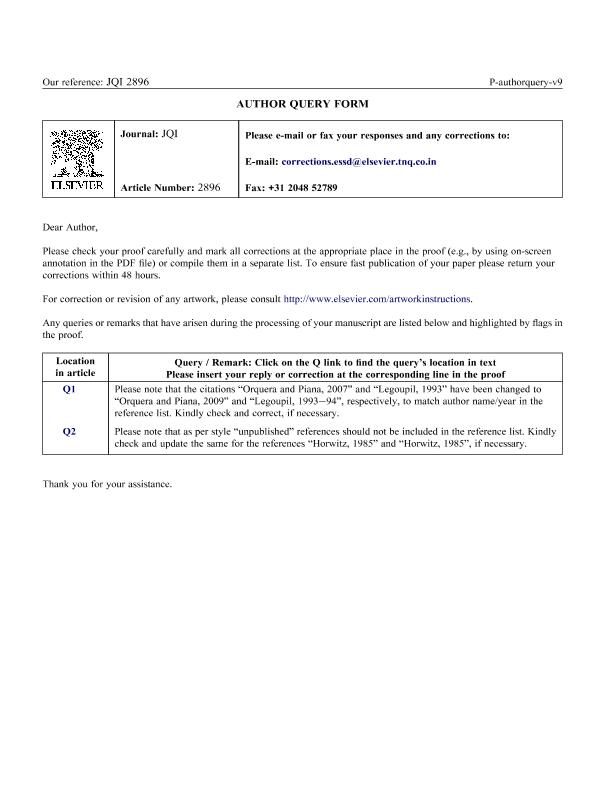Mostrar el registro sencillo del ítem
dc.contributor.author
Fernández, Marilén

dc.contributor.author
Maidana, Nora Irene

dc.contributor.author
Rabassa, Jorge Oscar

dc.date.available
2020-01-16T19:54:00Z
dc.date.issued
2012-04
dc.identifier.citation
Fernández, Marilén; Maidana, Nora Irene; Rabassa, Jorge Oscar; Palaeoenvironmental conditions during the Middle Holocene at Isla de los Estados (Staaten Island, Tierra del Fuego, 54° S, Argentina) and their influence on the possibilities for human exploration; Pergamon-Elsevier Science Ltd; Quaternary International; 256; 4-2012; 78-87
dc.identifier.issn
1040-6182
dc.identifier.uri
http://hdl.handle.net/11336/94965
dc.description.abstract
The Middle Holocene is a particular time period in which there are uneven environmental dynamics all along the southern portion of the continent. Whereas in the Puna, extreme aridity and high temperatures (the so-called " Hypsithermal" period) have been recorded, a more humid and rainy phase dominated southern Tierra del Fuego. The present paper explores the palaeoenvironmental situation of Isla de los Estados (Staaten Island, 54°38'-54°55' S; 63°48'-64°46' W) and its relationship with the archaeological record left behind by ancient canoeing people. The considered period is characterized by exceptionally windy conditions. The palaeoenvironmental information could be used as an explanation for the absence of cultural remains and also for the scarce archaeological record for Península Mitre. At the beginning of the Middle Holocene, the diatom record shows a large amount of . Aulacoseira sp that could indicate either windy conditions or higher water levels at the site core. The more distinctive changes in the diatom assemblages occurred at ca. 5000 cal B.P., suggesting a shallower water level and more acidic conditions. By 3000 cal B.P., the diatom species are strongly linked to peat and swampy environments. However, during the late Holocene, milder conditions might have favored seasonal travelling to the outer islands of the Fuegian Archipelago, though no definitive or permanent settlements have been found.
dc.format
application/pdf
dc.language.iso
eng
dc.publisher
Pergamon-Elsevier Science Ltd

dc.rights
info:eu-repo/semantics/openAccess
dc.rights.uri
https://creativecommons.org/licenses/by-nc-sa/2.5/ar/
dc.subject
ARCHAEOLOGY
dc.subject
PALAEOENVIRONMENTS
dc.subject
DIATOMS
dc.subject
MIDDLE HOLOCENE
dc.subject.classification
Otras Ciencias de la Tierra y relacionadas con el Medio Ambiente

dc.subject.classification
Ciencias de la Tierra y relacionadas con el Medio Ambiente

dc.subject.classification
CIENCIAS NATURALES Y EXACTAS

dc.title
Palaeoenvironmental conditions during the Middle Holocene at Isla de los Estados (Staaten Island, Tierra del Fuego, 54° S, Argentina) and their influence on the possibilities for human exploration
dc.type
info:eu-repo/semantics/article
dc.type
info:ar-repo/semantics/artículo
dc.type
info:eu-repo/semantics/publishedVersion
dc.date.updated
2020-01-15T19:18:39Z
dc.journal.volume
256
dc.journal.pagination
78-87
dc.journal.pais
Países Bajos

dc.journal.ciudad
Amsterdam
dc.description.fil
Fil: Fernández, Marilén. Consejo Nacional de Investigaciones Científicas y Técnicas. Centro Austral de Investigaciones Científicas; Argentina
dc.description.fil
Fil: Maidana, Nora Irene. Consejo Nacional de Investigaciones Científicas y Técnicas. Oficina de Coordinación Administrativa Ciudad Universitaria. Instituto de Biodiversidad y Biología Experimental y Aplicada. Universidad de Buenos Aires. Facultad de Ciencias Exactas y Naturales. Instituto de Biodiversidad y Biología Experimental y Aplicada; Argentina
dc.description.fil
Fil: Rabassa, Jorge Oscar. Universidad Nacional de la Patagonia "San Juan Bosco"; Argentina. Consejo Nacional de Investigaciones Científicas y Técnicas. Centro Austral de Investigaciones Científicas; Argentina
dc.journal.title
Quaternary International

dc.relation.alternativeid
info:eu-repo/semantics/altIdentifier/url/https://www.sciencedirect.com/science/article/pii/S1040618211003909
dc.relation.alternativeid
info:eu-repo/semantics/altIdentifier/doi/https://doi.org/10.1016/j.quaint.2011.07.009
Archivos asociados
